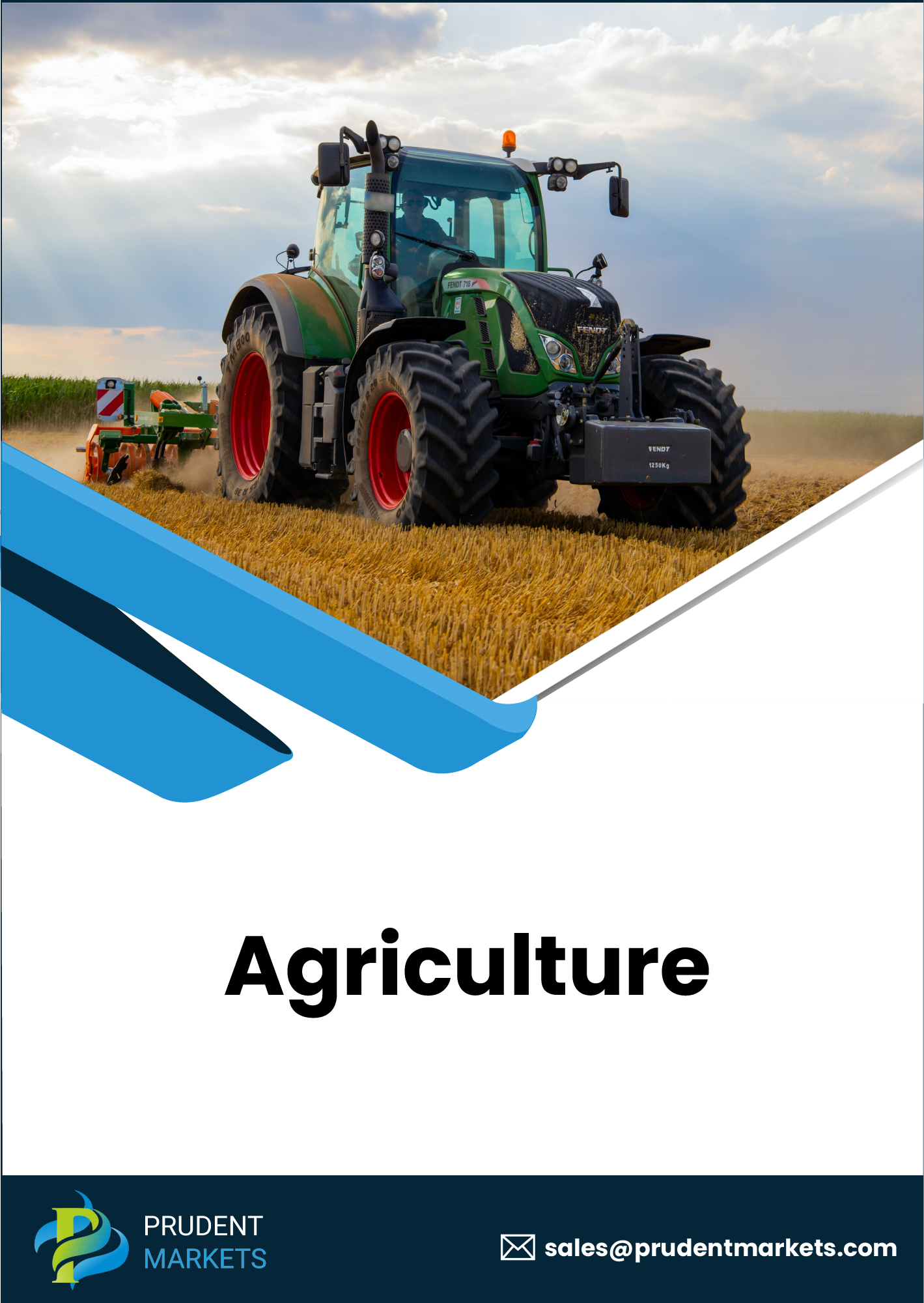
Tea Seed Meal Market Status and Trend Analysis 2017-2026 (COVID-19 Version)
- Published Date: 2021-01-27
- Report ID: 46844
- Pages: 85
-
Format:

Summary
Further key aspects of the report indicate that:
Chapter 1: Research Scope: Product Definition, Type, End-Use & Methodology
Chapter 2: Global Industry Summary
Chapter 3: Market Dynamics
Chapter 4: Global Market Segmentation by region, type and End-Use
Chapter 5: North America Market Segmentation by region, type and End-Use
Chapter 6: Europe Market Segmentation by region, type and End-Use
Chapter 7: Asia-Pacific Market Segmentation by region, type and End-Use
Chapter 8: South America Market Segmentation by region, type and End-Use
Chapter 9: Middle East and Africa Market Segmentation by region, type and End-Use.
Chapter 10: Market Competition by Companies
Chapter 11: Market forecast and environment forecast.
Chapter 12: Industry Summary.
The global Tea Seed Meal market has the potential to grow with xx million USD with growing CAGR in the forecast period from 2021f to 2026f. Factors driving the market for @@@@@ are the significant development of demand and improvement of COVID-19 and geo-economics.
Based on the type of product, the global Tea Seed Meal market segmented into
Tea Seed Meal Without Straw
Tea Seed Meal With Straw
Based on the end-use, the global Tea Seed Meal market classified into
Feed
Insecticide
Clear Fish Ponds
Derusting
Others
Based on geography, the global Tea Seed Meal market segmented into
North America [U.S., Canada, Mexico]
Europe [Germany, UK, France, Italy, Rest of Europe]
Asia-Pacific [China, India, Japan, South Korea, Southeast Asia, Australia, Rest of Asia Pacific]
South America [Brazil, Argentina, Rest of Latin America]
Middle East & Africa [GCC, North Africa, South Africa, Rest of Middle East and Africa]
And the major players included in the report are
Green-Sea
Guitaitai
Runxin
Jinhao Camellia Oil
Deerle
Shanrun
Dakseed
Jiangxi Youjia Food
Yihaikerry
Cargill
AM
Table of Contents
1 RESEARCH SCOPE
1.1 Research Product Definition
1.2 Research Segmentation
1.2.1 Product Type
1.2.2 Main product Type of Major Players
1.3 Demand Overview
1.4 Research Methodology
2 GLOBAL TEA SEED MEAL INDUSTRY
2.1 Summary about Tea Seed Meal Industry
2.2 Tea Seed Meal Market Trends
2.2.1 Tea Seed Meal Production & Consumption Trends
2.2.2 Tea Seed Meal Demand Structure Trends
2.3 Tea Seed Meal Cost & Price
3 MARKET DYNAMICS
3.1 Manufacturing & Purchasing Behavior in 2020
3.2 Market Development under the Impact of COVID-19
3.2.1 Drivers
3.2.2 Restraints
3.2.3 Opportunity
3.2.4 Risk
4 GLOBAL MARKET SEGMENTATION
4.1 Region Segmentation (2017 to 2021f)
4.1.1 North America (U.S., Canada and Mexico)
4.1.2 Europe (Germany, UK, France, Italy, Rest of Europe)
4.1.3 Asia-Pacific (China, India, Japan, South Korea, Southeast Asia, Australia, Rest of Asia Pacific)
4.1.4 South America (Brazil,, Argentina, Rest of Latin America)
4.1.5 Middle East and Africa (GCC, North Africa, South Africa, Rest of Middle East and Africa)
4.2 Product Type Segmentation (2017 to 2021f)
4.2.1 Tea Seed Meal Without Straw
4.2.2 Tea Seed Meal With Straw
4.3 Consumption Segmentation (2017 to 2021f)
4.3.1 Feed
4.3.2 Insecticide
4.3.3 Clear Fish Ponds
4.3.4 Derusting
4.3.5 Others
5 NORTH AMERICA MARKET SEGMENT
5.1 Region Segmentation (2017 to 2021f)
5.1.1 U.S.
5.1.2 Canada
5.1.3 Mexico
5.2 Product Type Segmentation (2017 to 2021f)
5.2.1 Tea Seed Meal Without Straw
5.2.2 Tea Seed Meal With Straw
5.3 Consumption Segmentation (2017 to 2021f)
5.3.1 Feed
5.3.2 Insecticide
5.3.3 Clear Fish Ponds
5.3.4 Derusting
5.3.5 Others
5.4 Impact of COVID-19 in North America
6 EUROPE MARKET SEGMENTATION
6.1 Region Segmentation (2017 to 2021f)
6.1.1 Germany
6.1.2 UK
6.1.3 France
6.1.4 Italy
6.1.5 Rest of Europe
6.2 Product Type Segmentation (2017 to 2021f)
6.2.1 Tea Seed Meal Without Straw
6.2.2 Tea Seed Meal With Straw
6.3 Consumption Segmentation (2017 to 2021f)
6.3.1 Feed
6.3.2 Insecticide
6.3.3 Clear Fish Ponds
6.3.4 Derusting
6.3.5 Others
6.4 Impact of COVID-19 in Europe
7 ASIA-PACIFIC MARKET SEGMENTATION
7.1 Region Segmentation (2017 to 2021f)
7.1.1 China
7.1.2 India
7.1.3 Japan
7.1.4 South Korea
7.1.5 Southeast Asia
7.1.6 Australia
7.1.7 Rest of Asia Pacific
7.2 Product Type Segmentation (2017 to 2021f)
7.2.1 Tea Seed Meal Without Straw
7.2.2 Tea Seed Meal With Straw
7.3 Consumption Segmentation (2017 to 2021f)
7.3.1 Feed
7.3.2 Insecticide
7.3.3 Clear Fish Ponds
7.3.4 Derusting
7.3.5 Others
7.4 Impact of COVID-19 in Europe
8 SOUTH AMERICA MARKET SEGMENTATION
8.1 Region Segmentation (2017 to 2021f)
8.1.1 Brazil
8.1.2 Argentina
8.1.3 Rest of Latin America
8.2 Product Type Segmentation (2017 to 2021f)
8.2.1 Tea Seed Meal Without Straw
8.2.2 Tea Seed Meal With Straw
8.3 Consumption Segmentation (2017 to 2021f)
8.3.1 Feed
8.3.2 Insecticide
8.3.3 Clear Fish Ponds
8.3.4 Derusting
8.3.5 Others
8.4 Impact of COVID-19 in Europe
9 MIDDLE EAST AND AFRICA MARKET SEGMENTATION
9.1 Region Segmentation (2017 to 2021f)
9.1.1 GCC
9.1.2 North Africa
9.1.3 South Africa
9.1.4 Rest of Middle East and Africa
9.2 Product Type Segmentation (2017 to 2021f)
9.2.1 Tea Seed Meal Without Straw
9.2.2 Tea Seed Meal With Straw
9.3 Consumption Segmentation (2017 to 2021f)
9.3.1 Feed
9.3.2 Insecticide
9.3.3 Clear Fish Ponds
9.3.4 Derusting
9.3.5 Others
9.4 Impact of COVID-19 in Europe
10 COMPETITION OF MAJOR PLAYERS
10.1 Brief Introduction of Major Players
10.1.1 Green-Sea
10.1.2 Guitaitai
10.1.3 Runxin
10.1.4 Jinhao Camellia Oil
10.1.5 Deerle
10.1.6 Shanrun
10.1.7 Dakseed
10.1.8 Jiangxi Youjia Food
10.1.9 Yihaikerry
10.1.10 Cargill
10.1.11 AM
10.2 Tea Seed Meal Sales Date of Major Players (2017-2020e)
10.2.1 Green-Sea
10.2.2 Guitaitai
10.2.3 Runxin
10.2.4 Jinhao Camellia Oil
10.2.5 Deerle
10.2.6 Shanrun
10.2.7 Dakseed
10.2.8 Jiangxi Youjia Food
10.2.9 Yihaikerry
10.2.10 Cargill
10.2.11 AM
10.3 Market Distribution of Major Players
10.4 Global Competition Segmentation
11 MARKET FORECAST
11.1 Forecast by Region
11.2 Forecast by Demand
11.3 Environment Forecast
11.3.1 Impact of COVID-19
11.3.2 Geopolitics Overview
11.3.3 Economic Overview of Major Countries
12 REPORT SUMMARY STATEMENT

Call Us
( India toll free )
+91 835 605 0278
( US toll free )
+1 800 601 6071
Drop us an email at
sales@prudentmarkets.com
Get your pre and post sales queries resolved by our Subject matter experts.
We will assist you to customize the report to fit your research needs.
Our prime focus is to provide qualitative and accurate data.
Feel free to order a sample report before purchase.
Your personal and confidential information is safe and secured.